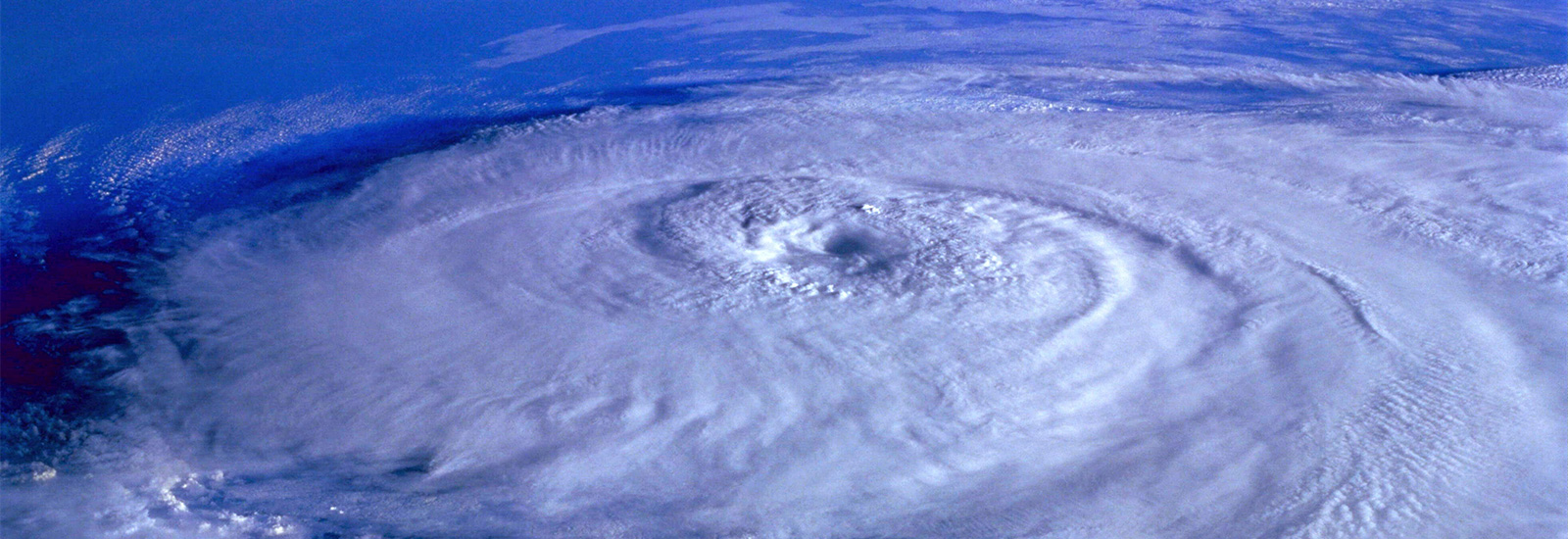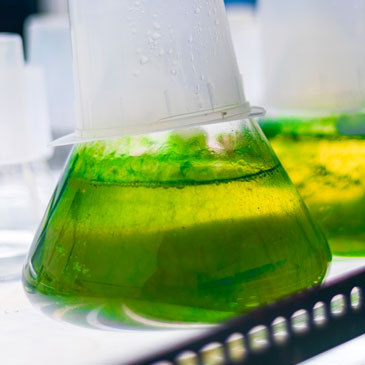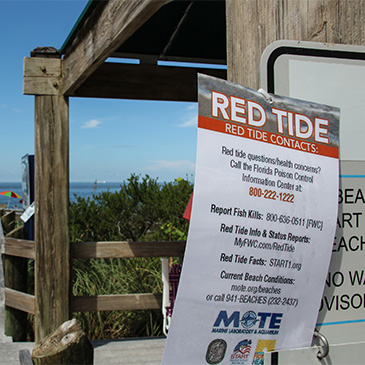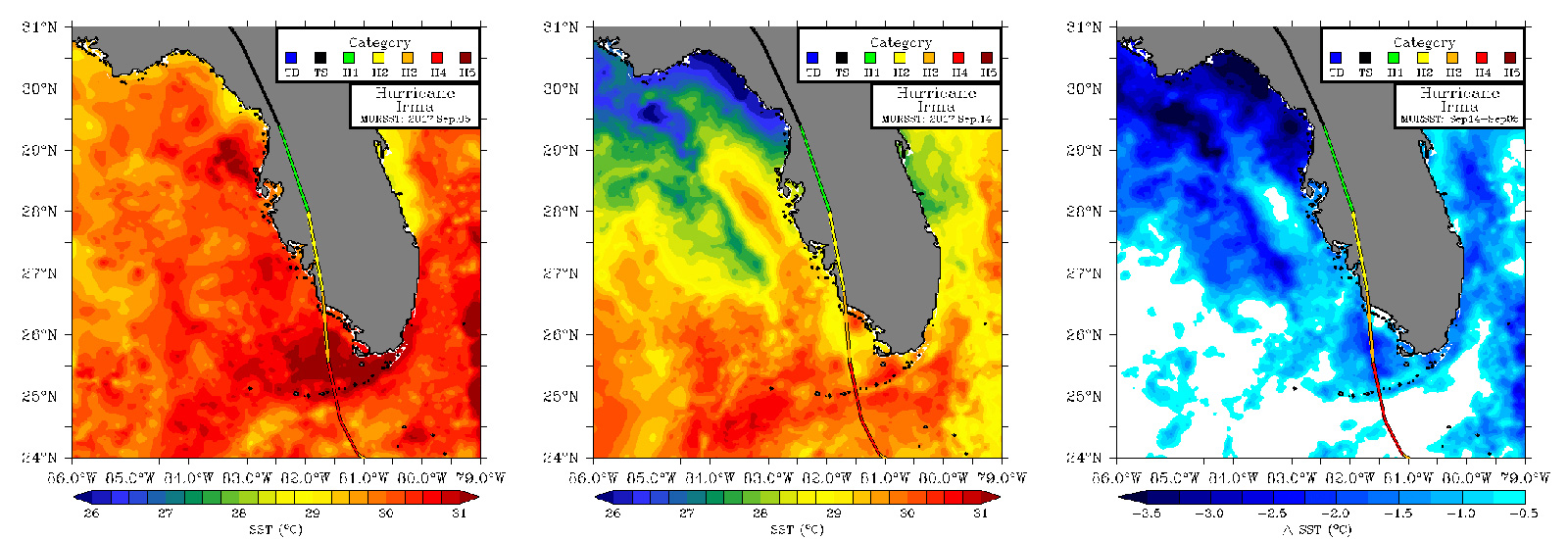Without more extensive research, it is difficult to definitively conclude that hurricane-induced upwelling and intense churning of Gulf waters contribute to or hastens the transport of Karenia brevisto the Florida coast. But what is clear is that a sequence of intense storm activity followed the next year by devastating red tide events exists.
The red tide that is currently menacing Southwest Florida, killing marine life, clouding the water, and affecting the health of locals and tourists began last November, two months after Hurricane Irma impacted the state.
Irma’s large wind field covered the west Florida Shelf for more than 36 hours, said Shay. And while surface transport was directed away from the coastline, the storm created significant upwelling, resulting in lower ocean depth transport towards the coast.
Exploring a possible link between hurricanes and intense algal blooms isn’t a line of research Shay would typically pursue. But over the summer, as Shay vacationed with his family on Sanibel Island in Southwest Florida, something a local TV meteorologist said about the red tide that was besieging the area caught the researcher’s attention.
“He said the area had not had the level of red tide it was currently experiencing in 38 years, and that was 1980,” Shay recalled.
So Shay immediately started to think outside the box, asking himself: What storms hit or came near the west Florida Shelf during that time? “And the answer was Hurricane Frederic, which reached category 4 strength and brushed the west Florida Shelf in 1979,” said Shay, who, along with a colleague, had actually studied data on Frederic years earlier, finding deep-ocean currents all the way down to 950 meters.
“We’re starting to explore this relationship in much more detail,” said Shay. “We have to look at other years when the red tide was not so dramatic and see what hurricanes passed through. But clearly for last year, post-Hurricane Katrina and Dennis in 2006, and certainly for 1980 and 1947, there were major hurricanes going across the shelf with high red tide events following.
“There seems to be a pattern,” he said, “and if it’s really true, we need to monitor storms and the ocean response going over the west Florida Shelf more carefully.”







